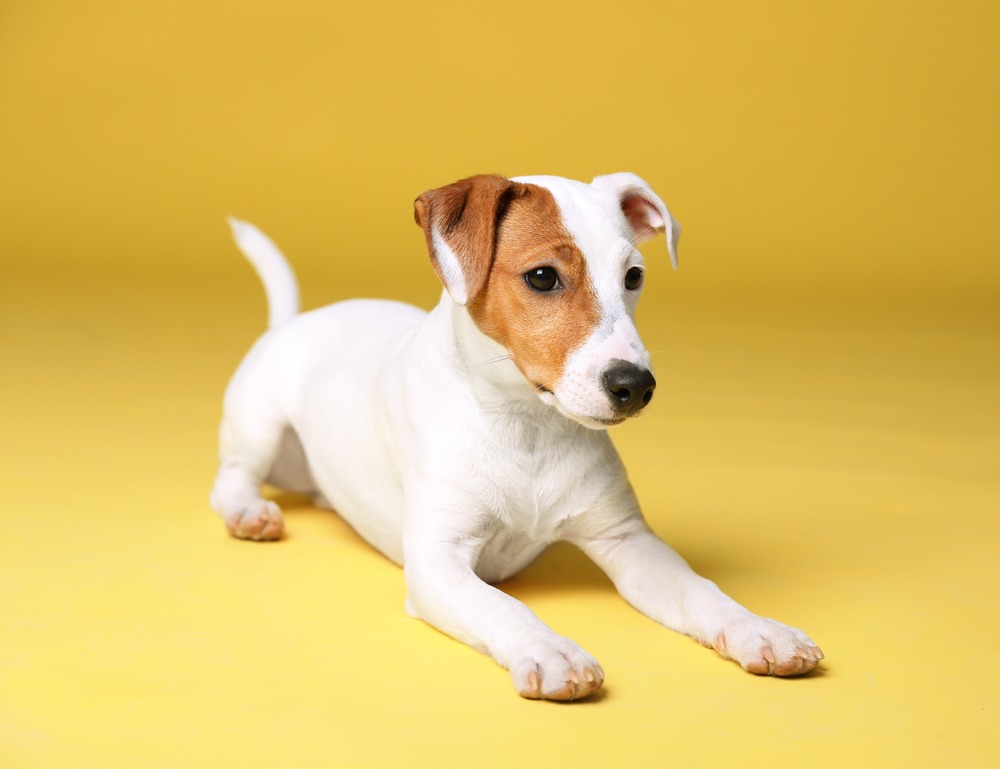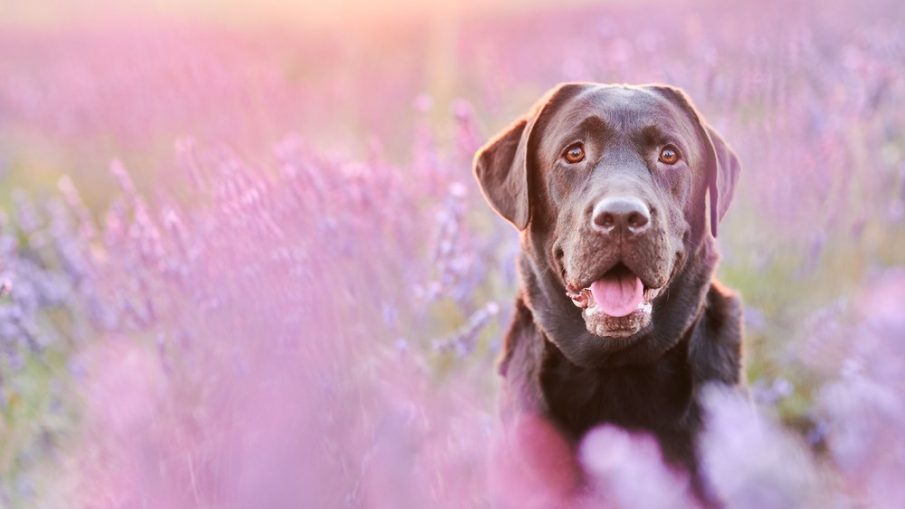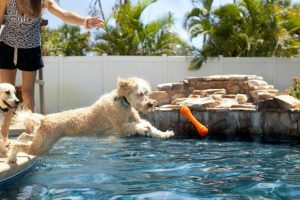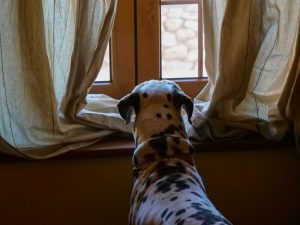There are over 30 breeds of dogs that have originated in England and every dog has been bred for a variety of purposes that give these furry four-legged friends specific natures and temperaments. For example, hunting, companionship, guarding, and sheepdogs all need a specific temperament to fulfil their purposes. This can lead to a wide array of behaviours among dogs. While English Springer Spaniels were bred to work closely with humans as hunting partners and have a desire to be with their owners, Chow Chows are much more independent and aloof like cats, typically preferring not to be hugged and squeezed.
Considering this, although dog owners have a significant impact on a dog’s behaviour and personality, there are some traits and temperaments that come part and parcel with the breed of our pets.
Here, we’ll take a look at common dog breeds, their temperaments, and how to care for them.
Top 5 Dog Breeds For Their Temperaments
Each year, Rover carries out research to find out which breed of dog is the most popular for that year, analysing their database of over 20,000 pet owners. Using that data, we’ll look at the personalities, temperaments and behaviours of our favourite dog breeds.
1. Labrador
When it comes to choosing our favourite dog breeds, it can be hard picking just one favourite. All breeds are the best, after all. Saying that, however, we’re still not surprised that the Labrador Retriever comes out on top. These dogs were originally bred to be kept outside working for long periods of time, particularly for fishing and jumping into the water, aided by their water-repellent coat and webbed paws. So if you’re taking a Labrador out by the river, prepare for a wet dog.
The Labrador is active, eager, easy to train, and ideal for a family due to its balanced and pleasant nature. Labradors are playful and intelligent dogs with warm and friendly temperament. While some breeds don’t like children, a Labrador’s friendly and playful personality makes them a perfect option around kids as well as other dogs, ideal for walking in groups of other dogs.
Labradors are rewarding pets that need lots of attention and exercise—this is particularly important due to their notorious joint and hip problems that usually incur later in life. Although food is love, Labradors are susceptible to obesity, so help them keep fit with plenty of long and energising walks.
2. Cocker Spaniel
Cocker Spaniels were originally bred as hunting dogs to flush game out. Comparable to the Labrador, the Cocker Spaniel has become a beloved companion breed. Whether they’re snuggling with you on the couch or out in the garden playing with the kids, their outgoing and extremely sociable temperament makes them an extremely happy breed. Cocker Spaniels love getting attention, so if you lavish affection on your pets, this is the breed for you.
They can be kept with other dogs and cats when socialised early, so they’ll get along fine with other dogs and even enjoy spending time with them—the dream breed for dog walkers! These dogs can live very happily in all types of households, making them versatile and dependable pooch. However, although you shouldn’t leave any breed alone for a long period of time, Cocker Spaniels don’t tolerate being left alone well and are vulnerable to panicking and worrying when left alone for a period of time.
3. Jack Russell
The Jack Russell was bred for flushing foxes out due to their steady bark. A lively and independent breed, these intelligent dogs can be charming and affectionate. However, they can also be a handful to train and manage. It’s recommended that experienced dog parents take in these pups.
Although incredibly small, you may find yourself surprised at the sheer energy and intensity these breeds can have. Because of their energetic nature, they need plenty of exercise and firm, consistent training. If they don’t, they might act out with negative behaviours out of boredom, to burn off energy, or for attention. Don’t be put off though—if you know how to handle a rowdy and energetic dog, you’ll earn a loyal friend for life.
If you’re a professional dog walker that has invested in insurance for dog walkers, then get ready for an exciting and fast-paced game of fetch!
 4. Staffordshire Bull Terrier
4. Staffordshire Bull Terrier
Although the Staffordshire Bull was originally bred for the then-popular sport of bull-baiting, those days are long gone. The Staffordshire Bull Terriers, also known as Staffies, are dubbed ‘nanny dogs’, as they are known for their love of children and generally loving nature. These dogs are extremely sociable and energetic, requiring rigorous exercise and plenty of stimulation to maintain their athletic and muscly shape.
Most Staffordshire Bull Terriers will live in peace with other dogs and animals in their family. That said, if your Staffy will be mixing with other animals outside, then they will need early socialisation.
If you’re looking to integrate a Staffy into your family, assess the personality of your other dogs. If you have other dominant dogs in the household, then a Staffy might not be the best choice. The same goes for if you’re a dog walker taking various breeds on walks—closely supervise them around dogs they don’t know, particularly if they’re challenging dominance.
5. Cockapoo
The Cockapoo was originally bred as a hypoallergenic dog with a happy temperament. Intelligent and loyal, when they are trained and given appropriate stimulation with walks and attention, they make rewarding and affectionate pets.
Cockapoos are friendly and sociable animals and thrive when around others. Try not to leave them alone for too long though as they can worry from separation anxiety.
These pets are ideal around other animals and children, however, due to their high levels of energy, they would be better suited around older children.
Words Of wisdom
We spoke to a professional dog walker who could provide some valuable insight into walking different dogs and breeds together.
Q: Do you have any advice for walking male and female dogs together?
A: We do walk male and female dogs together, but we do not walk bitches in heat and un-neutered males together. If there are any signs of mounting or pestering from a male dog, they will be put on the lead as it can stress the bitches out and cause an uncomfortable group dynamic.
Q: Do you have any advice for walking aggressive/reactive dogs and managing their behaviour?
A: We offer solo walks for aggressive or reactive dogs for the safety of other dogs and their handlers. We tend to take them to isolated walking areas where we are not likely to bump into large groups of people or dogs, meaning the dog can enjoy a relaxed walk without interruption. We use treats and positive reinforcement for good behaviour and aid in making the dog feel comfortable. We do a consultation with the dogs and owner before we begin walks them and then trial walks to determine which service is best for the dog. The key is making the dog feel as relaxed and comfortable as possible.
Q: Do you have any advice on how owners can help manage separation anxiety in dogs?
A: Start by leaving your dogs for short periods of time (15–20 minutes) and give them lots of positive reinforcement. Make sure your dog has had enough exercise and been to the toilet before you leave for work, so they feel more relaxed while you’re gone.
You can try leaving the TV or radio on, so they have some comforting background noise which can definitely help. You can also leave them with a safe chew, a Kong, a treat puzzle, or a snuffle mat in order to keep them entertained and distracted while you are away.
However, if these ideas are not working and the dog is still upset, calming plug-ins or natural oils can be used. Also hiring a dog walker or having someone who can come to visit or walk them during the day really helps to break up their day and deal with separation anxiety!






